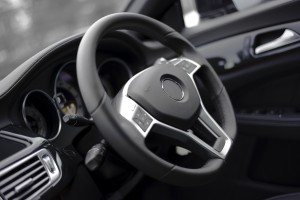
If the National Highway Traffic Safety Administration gets their way, drunk driving could soon become a thing of the past thanks to technological vehicle enhancements.
The NHTSA has been working with auto manufacturers since 2008 to develop the Driver Alcohol Detection System for Safety, also known as the DADSS Project. Similar to an ignition interlock device, the goal of the DADSS Project is to create a factory installed system that can determine if the driver of the vehicle is intoxicated. However, unlike standard ignition interlock devices, the goal of the DADSS Project is to determine if the driver is drunk without forcing them to blow into a machine.
Two Possible Detection Systems
That may sound like an impossible task – and to be fair, it’s not easy – but it can be done. There are two ways the DADSS Project hopes to make this happen:
Air Sensors: The first technique would work by placing air sensors throughout the cabin in strategic locations. These sensors would collect air and pass it through an infrared sensor which would analyze the ratio of carbon dioxide in alcohol. By placing the sensors in specific locations, researchers believe the system could isolate the driver’s breath from that of any passengers.
Touch-Based Detection: The second system would be a touch-based system that would be embedded somewhere inside a car that the driver needs to touch, be it a car handle, a start button or a shifter. A beam of light would conduct a quick tissue spectroscopy on the blood just below the skin. The scan would be able to detect the driver’s BAC in a matter of moments.
If either detection system detects that the driver is over the legal driving limit, the car won’t start. Researchers say the devices would be set at 0.08, but they could be reduced to zero tolerance for drivers who are underage.
Until that day, the risk of being involved in a car accident as a result of the actions of a drink driver is still there. No one likes to think about the possibility of being in a crash, but to protect your car or van, it’s therefore essential that you’re appropriately insured. For more information on how best to safeguard your vehicle, head to one sure insurance.
The NHTSA and industry partners are splitting the cost of the $10 million development, but there are some who oppose the project. The American Beverage Institute, for example, believes false readings or imperfect technology could cause thousands of drivers to be stranded every day. Despite concerns, the NHTSA is moving forward with the project, and they hope to have a finished product ready for production within the next five years.





